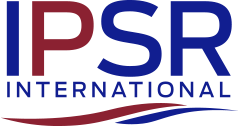AGENDA: Spring 2015 Meeting
DAY 1: THURSDAY, APRIL 23
See Day 2 agenda
8:15 a.m. Registration and Light Breakfast
Session I: Manufacturing Platforms and Learning Curves
Photonic components must be in HVM at low cost with the highest possible levels of integration
Spring Meeting Context and Expectations
Lionel C. Kimerling, Director, MIT Microphotonics Center
TWG Report: The Photonic System Manufacturing Roadmap
Richard Grzybowski, Director of Research and Development,
MACOM Integrated Photonic Solutions
MACOM Integrated Photonic Solutions
Intel Silicon Photonics – Connecting at the Speed of Light
Ling Liao, Intel
Scaling Laser Integration and Packaging Platforms
Robert Blum, Oclaro
Session II: Roadmap Emulators and Cost Analyses
Conceptual system physical architectures serve as targets for component roadmaps, and cost models support tradeoff decision.
TWG Report: Two Roadmap Emulators
Robert Pfahl, Senior Consultant, iNEMI
Emulator #1 – Data Center
John Bowers, UCSB
Emulator #2 – IoT, Sensors
Anu Agarwal, MIT and Juejun Hu, MIT
Manufacturing Platform Cost Models
Randy Kirchain, MIT and Elsa Olivetti, MIT
Session III: Open Architecture System Optimization
Open systems enable a more competitive, flexible, multi-vendor approach to manufacturing increasing volume and benefits to all players. At the same time, the deep technology challenges in this initiative may constrict the number of players. There are industry models for cooperation in these situations, which may need modification to support an open system approach.
TWG Report: Open Architecture System Optimization
Lionel C. Kimerling, Director, MIT Microphotonics Center
Digital Optical Phase Locked Loop for Low Power Consumption and
High-Speed Coherent Detection
High-Speed Coherent Detection
Tetsuya Kawanishi, NICT
Attendee Lunch
Microphotonics Center Industry Consortium Board Meeting
Session IV: Packaging of Electronic Photonic Systems
Packaging of SiPh devices in a 3D SiP structure is a major challenge: Thermal, electrical, and optical output from a small micro-module (e.g., Stacked Die, Electro-Optical Substrate, Interposer or socketed to PWB).
TWG Report: Photonic System Packaging
Bill Bottoms, Chairman, 3MTS
Photonic Packaging Strategies for 2.5D and Beyond
Takahiro Nakamura, PETRA
Photonic Packaging and Assembly for Cost-Efficiency and Scalability
Tymon Barwicz, IBM
Session V: Manufacturing Tools: Assembly and Test
New tools will be necessary to provide HVM capability for component parts, subsystems and final assembly of SiPh systems. This will be a moving target as component technologies change to meet new challenges.
TWG Report: Assembly and Test
Richard Otte, President and CEO, Promex Industries, Inc.
Photonic Test
Hidenobu Matsumura, Advantest
Precision Automation
Michael Chalsen, President, MRSI Systems
Technical Working Group Break-outs
5:30-7:30 p.m. Networking Reception
DAY 2: FRIDAY, APRIL 24
8:15 a.m. Light Breakfast
Key Points from Day 1
Prof. Lionel C. Kimerling, Director, MIT Microphotonics Center
Session VI: Circuit Boards, Backplanes and Connectors
Connectors will move from MM to SM, and backplane architecture will change to a cabled structure. The required OPCB, with SMT connectors is a major challenge.
TWG Report: Markets and Technology Roadmap
John MacWilliams, US Competitors LLC
Optical Cable Manufacturing for $1/Gbps
Terry Bowen, TE Connectivity
Silicone Polymer Waveguides for Optical Interconnects
Mustafa Mohamed, Dow Corning
Connections for Boards and Backplanes
Darrell Childers, US Conec
Session VII: Monolithic Integration
ULSI integration of SiPh ICs will be necessary to achieve cost targets. Yet integration must be cost-effective, balancing ULSI goals against multi-vendor device availability and SiP assembly of key SiPh devices.
TWG Report: Monolithic Photonic Integration
Jurgen Michel, MIT Microphotonics Center
Commercial Silicon Photonics: Volume and Cost Targets
Kal Shastri, Cisco
Silicon Photonics for Coherent Communications: Design for Manufacturing
Christopher Doerr, Acacia Communications
Silicon Photonics for Future Systems
Graham Reed, University of Southampton
Attendee Lunch
Technical Working Group Break-outs and Reports
Conference Summary
Lionel C. Kimerling, Director, MIT Microphotonics Center
